When it comes to identifying various trees, one often wonders, “What does a hickory tree look like?”
Hickory trees, renowned for their sturdy wood and savory nuts, are a magnificent addition to North America’s arboreal diversity.
This guide delves into the different types of hickory trees, exploring their unique bark and leaf patterns that aid in identification.
As we take a closer look, we’ll discover the distinctive characteristics of these majestic trees, from the shaggy bark of the Shagbark Hickory to the complex leaf structures of the Pignut Hickory.
With detailed descriptions and accompanying pictures, this guide aims to provide an insightful journey through the world of hickory trees.
This enables enthusiasts and novices alike to distinguish and appreciate these beautiful species.
Hickory Trees
Hickory trees are prominent fixtures across various landscapes, from the Midwest and upper Midwest of the United States to southern and northern England.
These trees are not only valued for their practical uses but also for their aesthetic appeal.
People often ask, “What does a hickory tree look like?” This article delves into their origins and characteristics and uses to answer just that.
Hickory Tree: Origin
Belonging to the genus Carya, hickory trees encompass around 19 species worldwide.
Predominantly found in North America, they also grow in parts of Asia.
Classified as deciduous, hickory trees shed their leaves annually and are considered angiosperms due to their enclosed, flowering seeds.
The species boasts striking yellow flowers and flowering spikes known as catkins.
Falling under the walnut family (Juglandaceae), the most common hickory species include the shagbark hickory, shellbark hickory, pignut hickory, and bitternut hickory.
Each of these species has unique features that we will explore.
Hickory Tree: Characteristics
Hickory trees can reach heights of up to 30 meters and feature leaves composed of 3 to 17 leaflets.
In autumn, the leaves of some species turn a vibrant yellow, contributing to their visual charm.
The trees produce male and female flowers, which are petal-less. Male flowers form in hanging catkins, while female flowers develop in spikes on the tree.
The fruit of a hickory tree is oval-shaped and enclosed in a four-valve husk that splits open upon maturity.
The nut inside varies in thickness across species; for example, the pecan, a type of hickory, has a thin shell.
It’s important to note that not all hickory nuts are edible—some can be exceedingly bitter.
1. Hickory Tree Bark
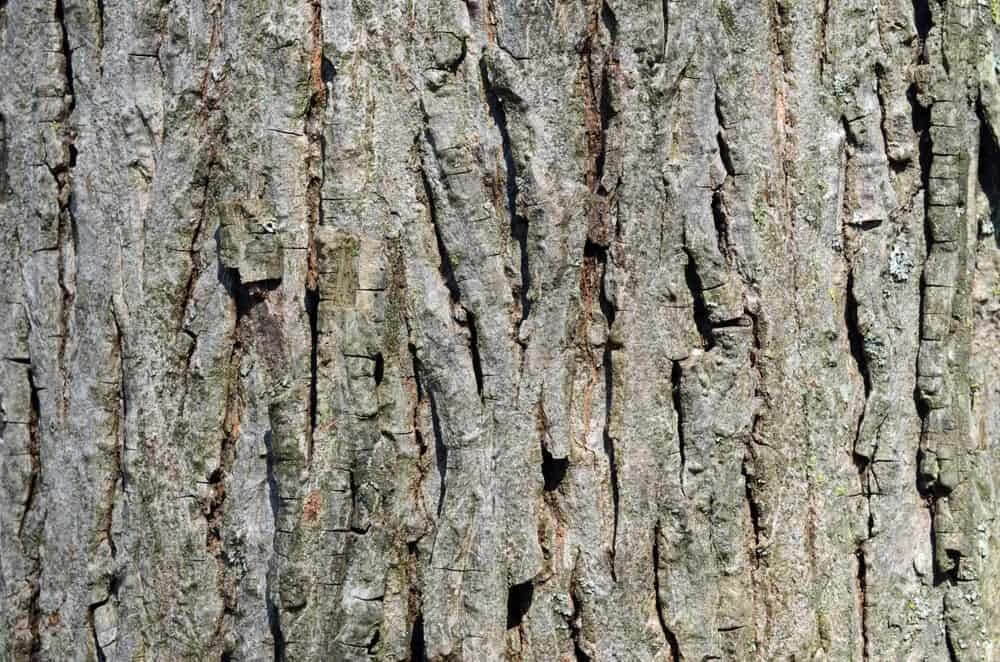
When pondering what a hickory tree looks like, its distinctive bark is a standout feature.
The bark of a hickory tree is not only functional but also ornamental, characterized by vertical ridges that curl outward at both the top and bottom, lending a rugged and shabby appearance.
As the tree ages, its bark transforms from a lighter gray to a darker shade, enhancing its visual appeal.
The spaces between these ridges vary, sometimes close together and other times wide apart, adding to the unique texture of the bark.
2. Hickory Tree Wood
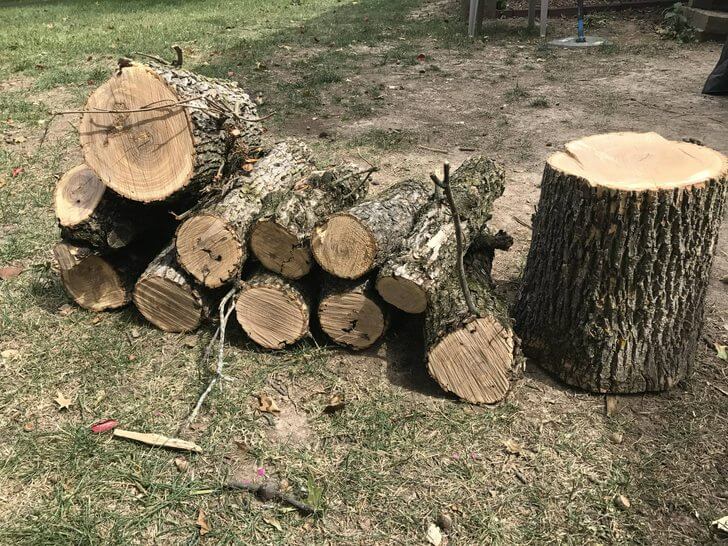
The wood of the hickory tree is renowned for its diverse quality across different species.
High-quality hickory wood boasts solid, straight grains, making it a preferred choice for high-end business applications due to its consistent and uniform appearance.
On the other hand, lower-quality hickory wood, often with knots and streaks, presents a rustic charm with its weathered, rusty appearance.
This type of hickory wood is especially sought after for use in cabins and lodges, providing a natural, earthy ambiance.
3. Hickory Tree leaves
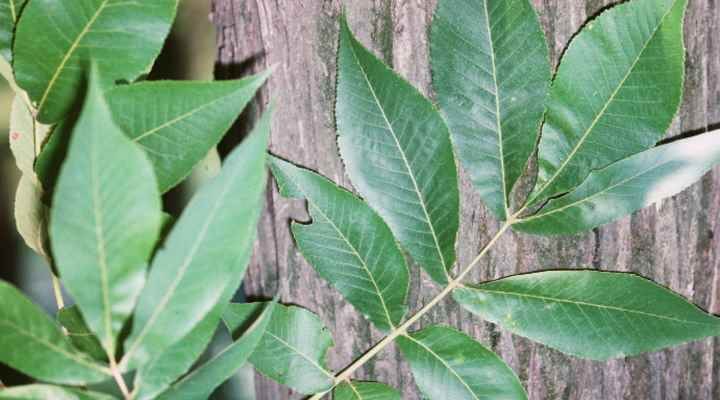
A key aspect of what a hickory tree looks like is found in its leaves.
Hickory tree leaves are long, narrow, and composed of clusters of leaflets arranged oppositely along the stem.
Each leaf is oval-shaped with pointed ends, with the terminal leaf typically being the largest.
These compound leaves, featuring several leaflets, contribute significantly to the dense canopy of the tree, offering ample shade and a lush green appearance during the growing season.
4. Hickory Tree Nuts
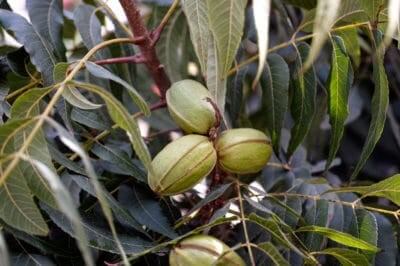
The nuts of the hickory tree are not only a vital aspect of its identification but also a valued resource.
Initially resembling green balls, the nuts mature into a hard, brown color.
These egg-shaped nutshells encase the prized hickory nut, which varies in color from white to tan.
The flesh of these nuts is similar to that of a fleshy fruit, with the most delectable nuts typically found in the shagbark and shellbark hickories.
These nuts add to the overall allure and utility of the hickory tree.
How to Identify Hickory Tree Parts?
Bark: The bark is scaly and has ridges. They are curled from top to bottom. The bark is extremely beautiful and enhances the landscape. The shagbark tree has a rough bark as compared to the shellbark hickory.
Leaves: Leaves turn to a beautiful yellow color in Autumn. The leaf is composed of multiple leaflets with a big terminal leaf.
Nuts: Hickory nuts are tasty and sweet (not all). The shagbark tree and pecan tree nuts are the most popular and delicious.
Where Do Hickory Trees Grow?
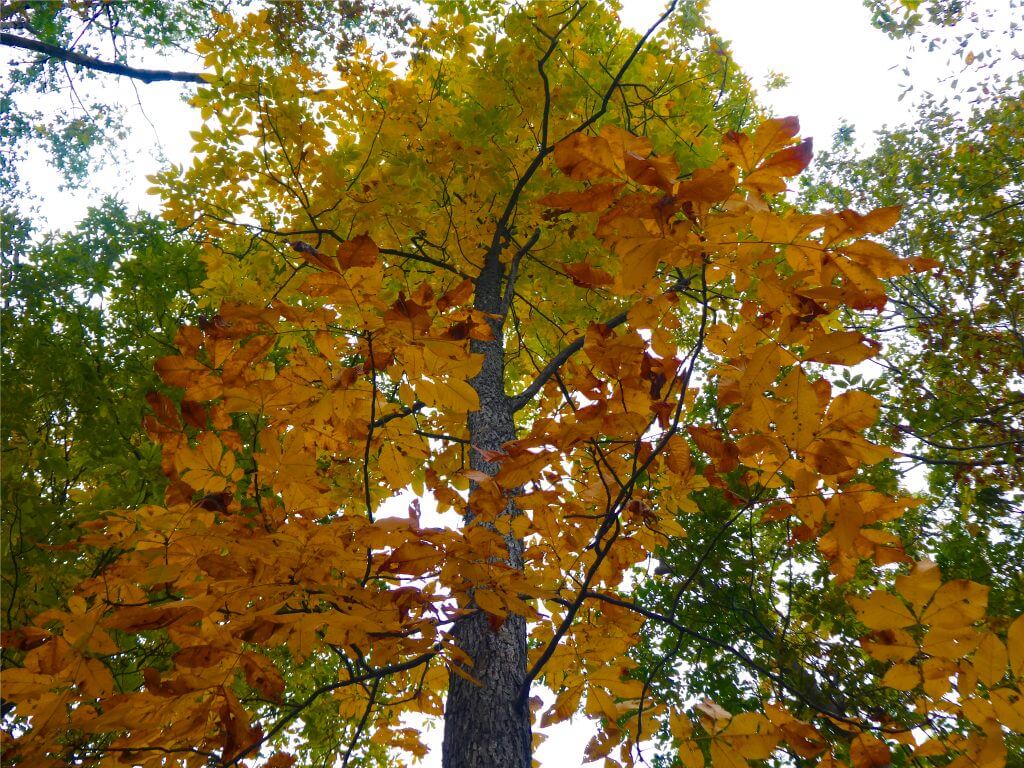
Out of the 19 species in the world, 13 are found in North America, and the remaining five can be found in Asian countries like India, China, and Vietnam.
To help you identify them properly, we will list some common hickory species and where they are found:
Shagbark hickory grows in the US (zones 4 to 8) because of the fertile, moist, and well-drained soil.
You will recognize a hickory tree from its ornamental bark that enhances the landscape.
Shellbark hickory is also found in the US (zones 5 to 8) and handles occasional flooding very well.
Mockernut hickory tolerates dry sites and is found in zones 4 through 9.
Where Can You Plant Your Hickory Tree?
Hickories require a large area as they are huge and shed leaves all year round.
Choose a location where the tree will not interfere with your power lines.
Hickory trees should be used for the shade, so choose an area that requires it. You cannot change the location after planting as they have long taproots.
All hickories have a substance called juglone which is toxic for other plants that they grow around them.
Plants affected by this substance show signs of death.
So, plant your hickory at least 80 feet away from other plants.
If you want the hickory to brighten your landscape, plant them in a big garden or a park.
How Big Does the Hickory Tree Get?
Hickories are notoriously slow growers. They can take up to 25 years to harvest nuts and at least 40 years to produce the first crop.
However, the size varies as the species change. Shagbark hickory is very large and can grow up to 70 to 90 feet tall.
It sometimes even grows up to 120 feet tall. Its canopy spreads from 50 to 70 feet wide.
The trunk is also very wide, up to 3 feet. Mockernut hickory is also large and grows in hills and ridges. It can tolerate dry soil.
Pignut hickory is slightly smaller than mockernut hickory, growing to 50 to 80 feet tall.
They can also be grown in dry soil. There are some smaller hickories as well, like the Laney’s hickory and the scrub hickory.
They grow up to 10 to 30 feet with multiple trunks.
Types of Hickory Trees
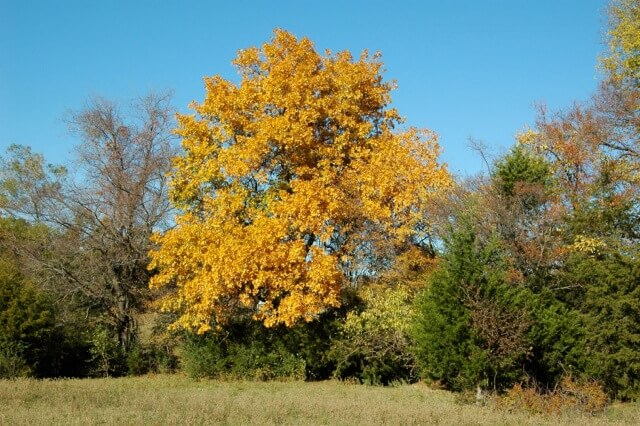
The hickory family is divided into two major groups: true hickories and pecan hickories. Talking about true hickory trees include the common types that we have talked about, like shagbark, pignut, mockernut, and shellbark.
Out of pecan trees, the best-known species is pecan. Pecan is also the only hickory that produces tasty nuts that have commercial value. Bitternut is also pecan hickory, but you cannot eat the nuts.
1. Shagbark Hickory
Indigenous to North America, specifically the eastern US zones (4 to 8).
The Shagbark Hickory is a species known for its distinctive appearance. When pondering “what a hickory tree looks like,” the Shagbark is a prime example of its uniqueness.
The smoke-gray bark peels away from the trunk, creating a rugged visual.
These trees thrive in full to partial sun and are part of the Pecan family.
Typically, they can reach heights up to 130 feet, although more commonly, they grow to about half this size.
Shagbark hickories are slow growers, and their fruit takes years to mature, necessitating patience or external cultivation techniques for faster results.
Some nurseries, using grafting techniques, offer varieties like ‘Grainger’ that yield fruit in just two to three years.
However, the long taproot of the Shagbark makes transplantation challenging, so it’s advisable to select a nursery with a reasonable guarantee policy.
2. Shellbark Hickory
A member of the walnut family, the Shellbark Hickory is a low-growing tree, living for hundreds of years and reaching heights of 50 to 80 feet.
Its leaves feature seven to nine leaflets in clusters, and the bark has a shabby gray appearance.
The nuts are the largest among hickories, oval-shaped, and divided into five to six sections, enclosed in a husk.
The best growth for Shellbark Hickories occurs in moist soil; they cannot tolerate alkaline conditions.
Similar to the Shagbark in appearance, they require a large growing space.
The wood of the Shellbark is durable but slightly less strong than that of the Shagbark.
3. Pignut Hickory
Pignut Hickories, less common globally, are native to Canada and the eastern US.
They grow up to 50 to 60 feet tall and feature gray bark. The leaves are clustered with five to seven leaflets, the terminal leaflet being the largest.
The nuts are pear-shaped with four ridges on the husk, distinguishing the Pignut Hickory.
Tolerant of salty conditions, they thrive in various soils but need good drainage.
Historically, the wood was used for wagon wheels and brooms, and today, it’s utilized for tool handles due to its durability.
4. Mockernut Hickory
Among the most abundant in the US, Mockernut Hickories can live up to 500 years.
The wood is strong, flexible, and hard. The leaves, with seven to nine leaflets, have short hairs on the underside, leading to the name “mockernut.”
The largest leaflet is at the end, and the nuts have four sections.
Preferring slightly acidic soil, they do not do well in salty conditions.
The wood is versatile and used in tools requiring shock resistance, athletic equipment, and furniture.
5. Bitternut Hickory
Also known as swamp hickory, Bitternut Hickories are smaller, growing up to 35 feet.
They have seven to eleven leaflets per leaf, with a significant apical leaflet. The nuts are bitter, with a hard, bony shell.
Easily identifiable by their yellow winter buds, these trees prefer acidic soil and cannot tolerate salinity.
The wood is durable, used in furniture, ladders, and tool handles, and is popular for smoking meat.
Some other hickories that are not very common but also form a part of the family are:
Scrub Hickory: Native to the southern US, they are small hickories that grow only up to 25 meters. You can identify them from the coarse leaflets. They have tasty edible nuts.
Red Hickory: This hickory tree is rare and can be found in North America. The leaves have five to nine leaflets. The nuts are sometimes present in clusters of two or three.
Black Hickory: Unfortunately, Black hickory is an endangered species in North America. They are called black hickories because the leaves are rusty brown. They have sweet nuts.
Conclusion
Understanding “what does a hickory tree look like” enhances our appreciation for these majestic and valuable species.
Each type of hickory, with its unique bark texture and leaf arrangement, contributes to the rich tapestry of North America’s forests.
Whether it’s the rugged bark of the Shagbark or the intricate leaves of the Mockernut, hickory trees offer a study in diversity and resilience.
This guide, complete with vivid pictures, serves as a valuable resource for anyone interested in tree identification, ecology, or simply enjoying the natural beauty of hickories.
As we learn to identify and appreciate these trees, we also deepen our connection with the natural world, recognizing the vital role hickories play in our ecosystems and our culture.

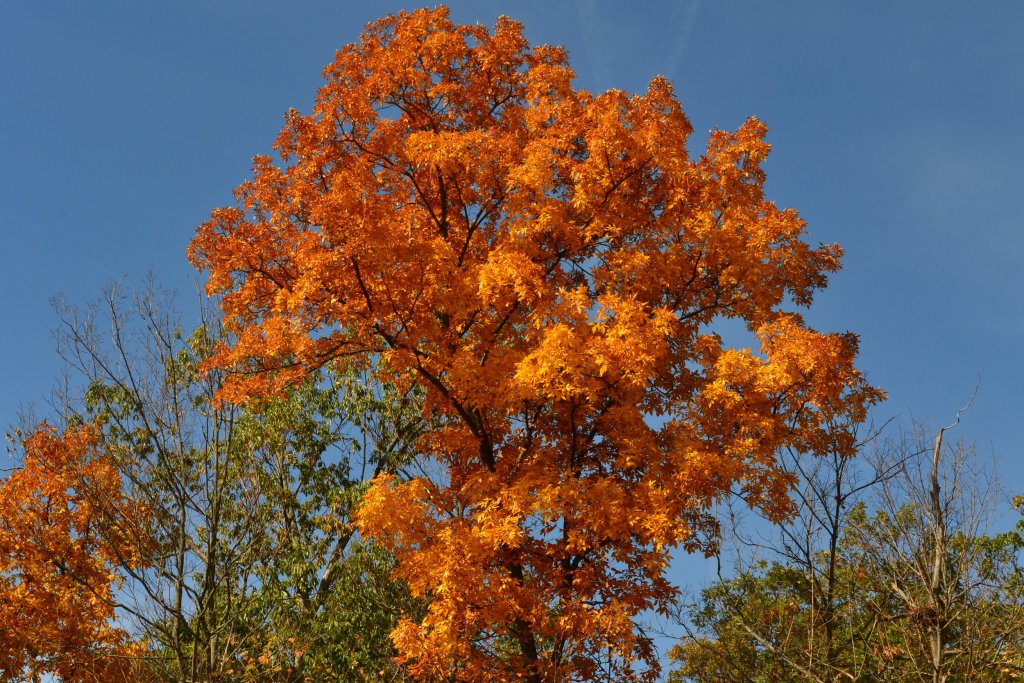
NEED PICS ADDED TO ARTICLE!